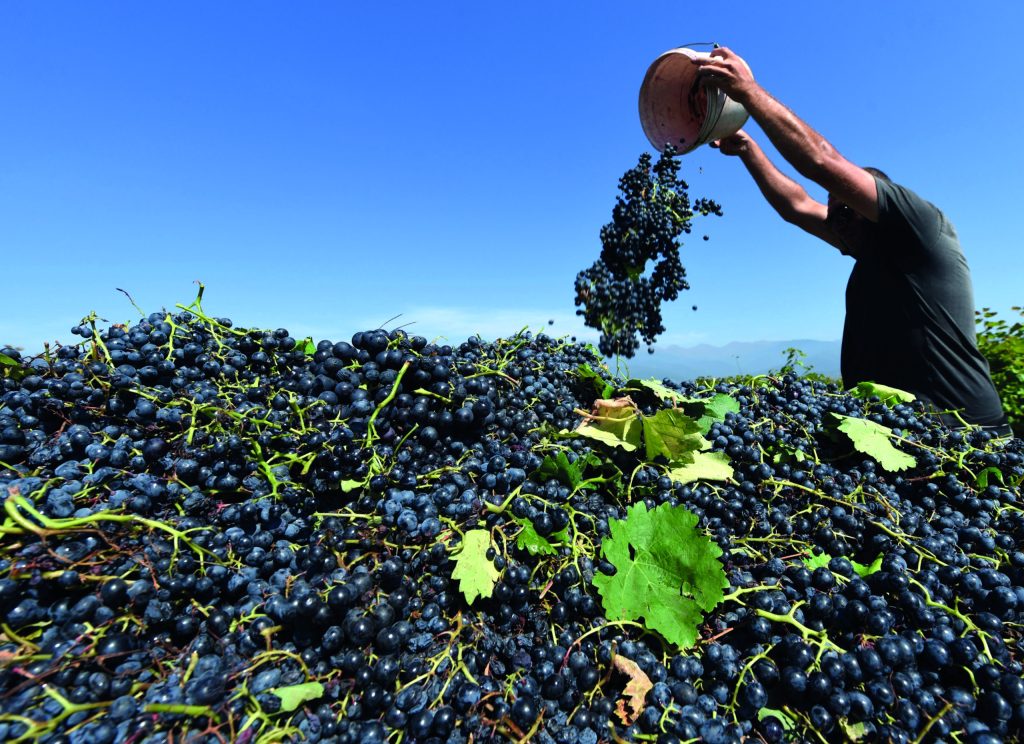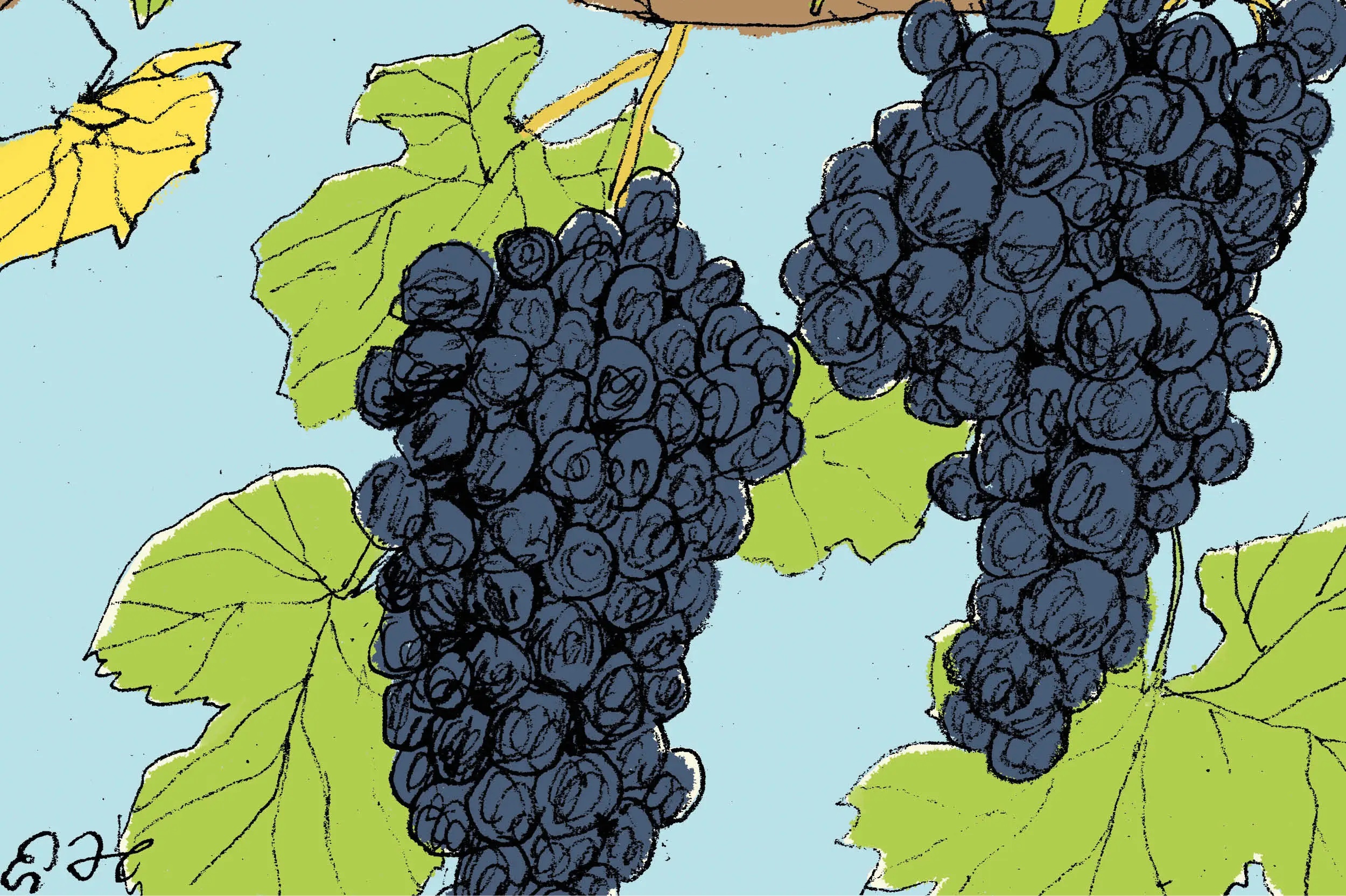Long before Achilles chased Hector around Troy and Homer wrote about the οἶνοψ πόντος, the ‘wine-dark sea’, people living in what is today the republic of Georgia were making wine. Archaeologists have found evidence of wine making there dating from 8000 BC: an impressive statement to the inventiveness to which necessity gives birth. Stretching from the Black Sea to the Caucasus Mountains, Georgia is home to a wide variety of climates, types of soil and geographical physiognomies. Today it is home to some 500 varietals, few of which are familiar to westerners (even though many if not most western grapes probably have precursors in Georgia and the Black Sea ‘cradle of wine’). Georgian wine was much-favored in the Soviet Union, a fact perhaps not entirely unconnected to the contingency that Uncle Joe Stalin was born there.
Wine is a huge part of the domestic economy of Georgia, where by ‘domestic’ I mean pertaining to the domus, the house. While there are many small-production wineries in Georgia, most people at home drink the wine they have made themselves. Generally, they follow something like the method uncovered by those archaeologists from 10,000 years ago.
The fermenting grape juice is sealed in beeswax-lined, amphora-like clay vessels called kvevris (well, that is the name of one common sort of pot), which are buried in the ground for at least six months. The red is served at ‘ground temperature’, which is just how claret ought to be served. The result is wine that, to apalette brought up in France, Italy, California and Australia, is full of unusual minerally tastes and complex aromas.
Of the several regions in Georgia where grapes are grown and wine made, Kakheti in the east is a warm and sunny spot, not unlike some wine-growing regions in California. Another important wine region is Imereti, farther to the east, where the climate is closer to that up in the Finger Lakes region of upstate New York: cooler, grayer, wetter.
I know these interesting facts because a colleague recently took me to Chito Gritois, one of the handful of Georgian restaurants in New York City. I can also tell you, thanks to this same source, that Chito Gritois Georgian for ‘Little Turtle Dove’, expressed in the vocative: ‘O Little Turtle Bird’. Last month, thanks to Natalie and Lika, the intrepid proprietors, we had a little introduction to the Georgian table’. It was then that I had my tutorial in Georgian wine.
By the way, I say that Natalie and Lika are intrepid because they opened their restaurant in October 2020, smack dab in the middle of the coronavirus pandemic. They soldiered on at 25 percent capacity until Andrew Cuomo decided to try to do to restaurants what he had done nursing homes. Somehow, they managed to emerge in tact and are now open again for indoor dining.We tasted several wines, but I will confine myself here to two. The first was a 2017 Kisi, a so-called ‘orange wine’ from the Makashvili Wine Cellar in the Alazani river valley in the eastern part of Kakheti. What makesit orange — really, it is a mellow amber — is the process of fermenting the grape juice in contact with the grape skins. In this case, the grape was also the name of the wine, Kisi, and the result was an interestingly sharp but full-mouthed wine boasting a complex palette and hints of tobacco as it left the tongue. Serve it chilled with seafood or grilled poultry. A quick search tells me that you can rustle up a bottle from various emporia for about $25-$30.
The second wine I want to recommend is a 2018 red from the Archil Guniava Wine Cellar, a small family-owned winery nestled the hills of the Imereti region that produces about 100 cases of wine annually. What we tasted was a blend of Otskhanuri Sapere and Tsolikouri — no, I hadn’t heard of them either. Like the Kisi, this was an interestingly complex wine, a little stern, but still approachable with seductive hints of sumptuousness behind the tannin. You might find it in a good wine shop for about $35-$38, but if you are in New York I recommend popping into Chito Grito. You can have an excellent lunch and a good bottle of wine for a modest consideration. You can also learn abit about Georgia from Natalie and Lika, who are as friendly as they are knowledgeable.
Chito Grito is at 173 3rd Avenue, New York City (646-767-0154). This article was originally published in The Spectator’s April 2021 US edition.

























